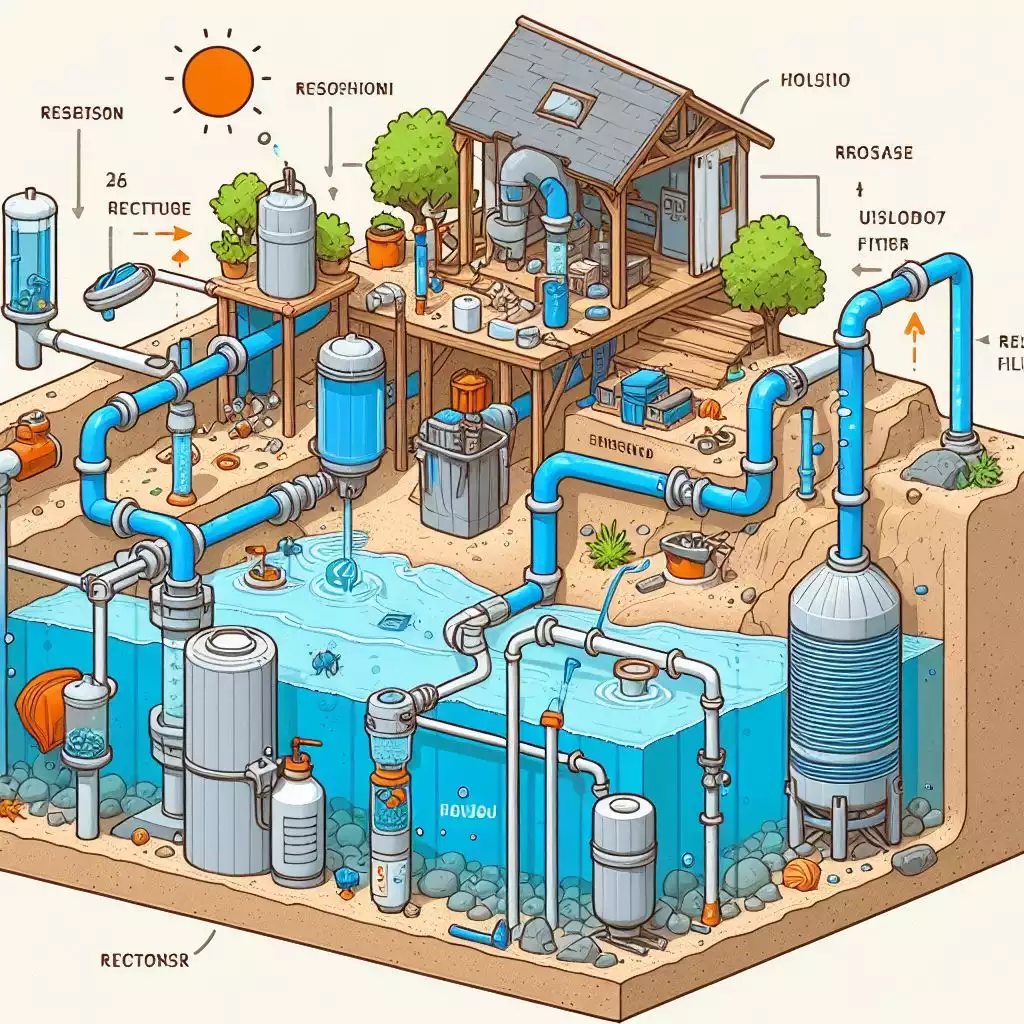Installing a sand filter for home is one of the key steps to maintaining the cleanliness of a household swimming pool. An effective sand filter can efficiently remove impurities and contaminants from the pool, ensuring crystal clear water for you and your family to enjoy a refreshing and healthy swimming experience. However, installing a sand filter correctly is not simple and requires some skills and precautions. This article will introduce how to install a sand filter at home and the precautions to be taken during the installation process to help you successfully complete the installation and maintain the cleanliness of the pool water.

I. Preparation Before Installing the Sand Filter
A. Determining the Installation Location
When choosing the installation location for the sand filter, several factors need to be considered to ensure a smooth installation. First, select a flat and sturdy ground as the installation location to ensure that the sand filter can be placed securely without wobbling. Secondly, consider the pipe connections and water flow direction to ensure that the selected location is close enough to the pump and pool edge, and is convenient for connecting the inlet and outlet pipes. Lastly, ensure that the selected location is easy to operate and maintain for future cleaning and maintenance work.
B. Preparing Tools and Materials
Before installation, prepare some necessary tools and materials to ensure smooth installation and achieve the expected results. The tools and materials required for installing the sand filter include:
Pipe fittings: used to connect the pump outlet and sand filter inlet, ensuring a tight and leak-free connection.
Screwdriver: used to fix the sand filter bracket and fittings with screws, ensuring stable and secure installation.
Screws: used to secure the bracket and fittings, ensuring they are firmly reliable.
Measuring tools: such as rulers or measuring tapes, used to accurately measure the installation position and pipe connection length.
Wrench: used to tighten fittings and screws, ensuring a secure connection.
Sealing tape: used to add sealing tape at the connection to prevent water leakage.
Auxiliary materials: such as rubber gaskets, rubber washers, etc., used to enhance the sealing and stability of the connection.
II. Steps for Installing the Sand Filter
A. Building the Bracket:
Ensure that the selected location for the bracket is flat and sturdy enough to support the weight of the sand filter and maintain stability. Use a screwdriver and screws to fix the various parts of the bracket to the ground, ensuring that the bracket is firmly reliable.
B. Connecting the Pipes:
Connect the outlet pipe of the pool pump to the inlet pipe of the sand filter. Ensure that the fittings are tightly sealed, use a wrench to tighten the fittings to prevent water leakage. Check whether the pipe connection is firm, ensure smooth water flow, and no blockages or obstructions.
C. Installing the Sand Filter:
Place the sand filter on the assembled bracket, ensuring the correct installation direction, and the inlet pipe is connected to the pump’s outlet pipe. Use a screwdriver and screws to secure the sand filter to the bracket, ensuring that the sand filter is securely fixed to the bracket without wobbling or tilting.
D. Connecting the Power:
Insert the power cord of the sand filter into the power socket, ensuring a secure and reliable connection without loosening or poor contact. Turn on the power switch of the sand filter, check whether the sand filter operates normally, listen for any abnormal sounds, and observe whether there is normal water flow.
By following the above steps one by one, you can ensure the smooth installation of the sand filter and ensure its normal operation, providing good protection for the cleanliness of the household swimming pool.
III. Checking After Installation
A. Leak Check:
Start the pump and observe whether there is any water leakage at the connection of the sand filter. For example, check whether there are water drops or water seepage at the connection of the inlet and outlet pipes. If leakage is found, immediately shut down the pump and use a wrench to tighten the screws at the pipe connection to ensure a tight connection. Restart the pump and recheck the leakage situation until no water leakage is confirmed.
B. Filter Material Check:
Open the cover of the sand filter and check the placement of the filter material. For example, ensure that the sand or other filter material in the sand filter is evenly distributed without accumulation or misplacement. If the filter material is found to be accumulated or loose, use hands or tools to gently tap the filter material to redistribute it evenly.
C. Test Operation:
Start the pump and observe the operation of the sand filter. For example, check whether the pump operates normally and whether the water flows smoothly into the sand filter. Pay attention to listening to the sound of the sand filter during operation to ensure there are no abnormal noises or vibrations. Observe the water flow at the outlet of the sand filter. For example, check whether the water flow is uniform, without abnormal fluctuations or stagnation. Test the filtering effect of the sand filter. You can test the filtering effect of the sand filter by adding a small amount of dirt or particles to observe its effect on removing dirt.
By correctly installing the sand filter and following the corresponding precautions, you can ensure the cleanliness of the pool water and provide a safe and healthy swimming environment for your family. Regular inspection and maintenance of the sand filter are also essential to ensure its normal operation and prolong its service life. We hope that the installation guide and precautions provided in this article can help you successfully install the sand filter and safeguard the maintenance of the household swimming pool.
